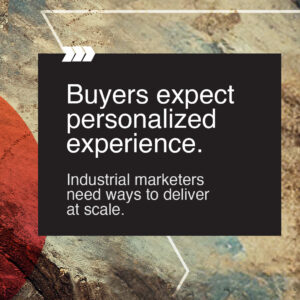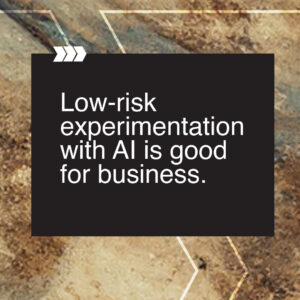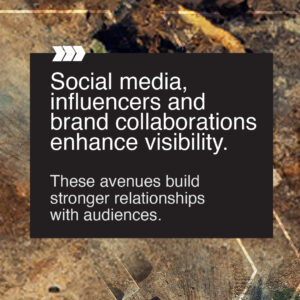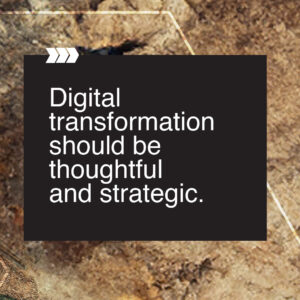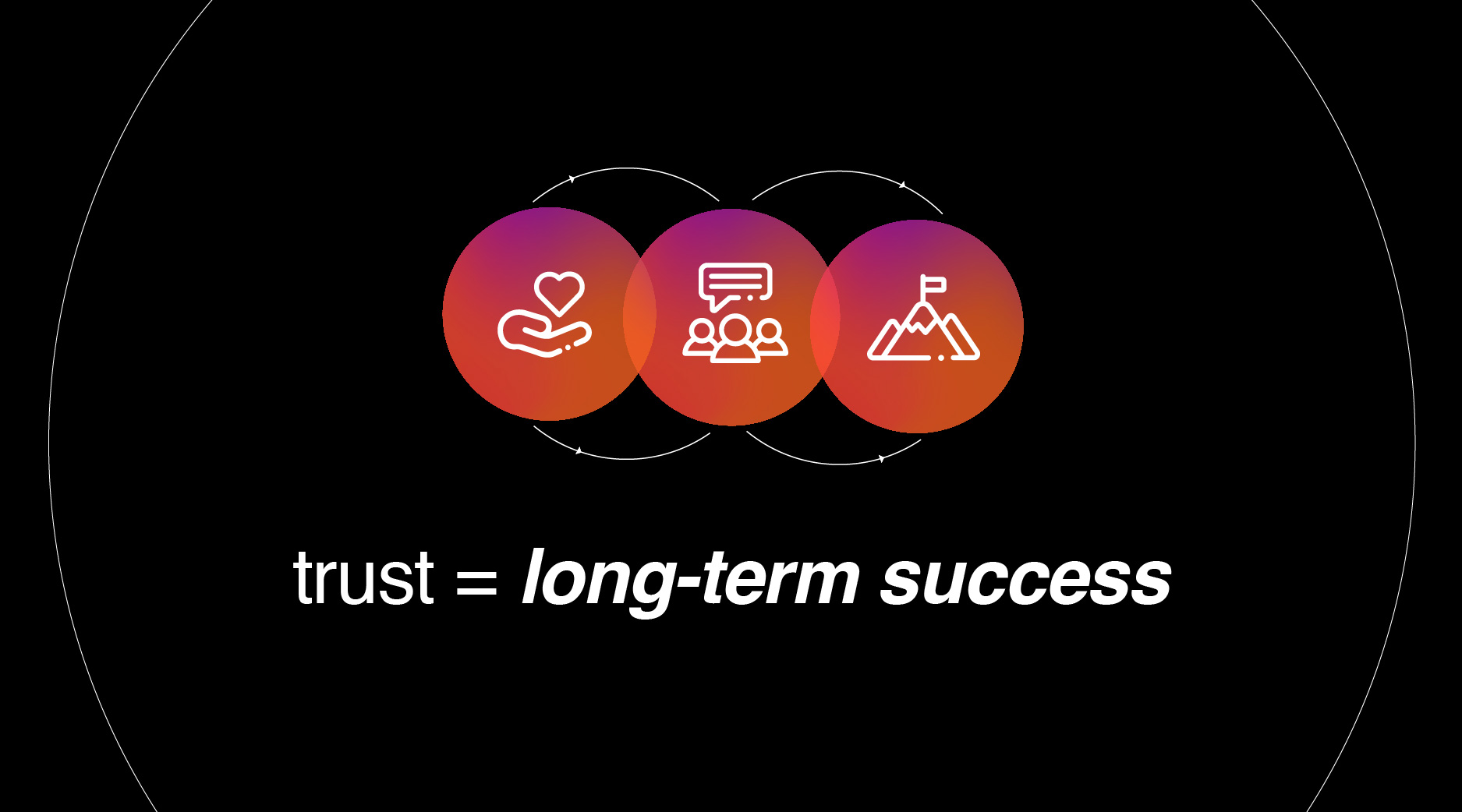Industrial marketing has evolved significantly over the years, leaving brands with a lot to ponder. A rapidly changing mar tech landscape, shifting customer expectations, privacy concerns in the age of personalization and ensuring full utilization of existing tools and strategies only scratches the surface.
As we roll into the second half of 2024 and look forward to 2025, we see four key areas industrial marketers can focus on to best prepare for their future. Keep on reading and we’ll talk through each one and share our take on how to address them.
#1: Personalization at Scale
Industrial marketers face different challenges than consumer marketers. Longer sales cycles, complex decision-making processes and highly specialized audiences – these require precision and customization that can be tough to scale.
One of the most pressing challenges industrial brands (and the businesses they serve) face is the need for personalization at scale.
B2B buyers expect tailored experiences, much like those they experience in the B2C space. That means industrial marketers need to deliver customized content that resonates with specific audience segments – without overwhelming their resources. This requires a deep understanding of individual customers and an investment in solutions that meet them where they are.
Our Take on Personalization at Scale
Many clients we work with have experience in the personalization space, but we see opportunity to scale and to get more out of existing marketing automation tools and platforms.
It’s important to experiment toward intended outcomes, and then scale as you establish success. Where you start depends on where the biggest opportunity is to reduce friction, delight a customer or capitalize on a market opportunity.
We encourage industrial brands to develop a framework to define their personalization and marketing automation efforts. Consider the following factors:
- Personalized content and messaging: What are the industry-specific case studies, personalized product recommendations or customized pricing options that make the most sense for your business model?
- Cross channel personalization: How can your mar tech platform be activated to coordinate personalized campaigns across multiple channels, ensure messaging is consistent and reinforce the personalization effort?
- Automated engagement: What workflows will trigger personalized communications based on predefined events, such as product demo requests or long periods of inactivity?
- Customer support: How can you integrate customer feedback tools within your mar tech stack to capture insights from customers about their experiences with your personalized content?
- Measurement and experience optimization: How will you use mar tech to test and refine your digital ecosystem and personalization strategies? What is your baseline for measuring success?
Most marketing automation tools and platforms have flexibility and customization opportunities. Experimentation is key. Start with a plan and measure it appropriately.
#2 Intentional Experimentation and Pilots for AI
For many large industrial brands and manufacturers, artificial intelligence (AI) is already improving productivity across the value chain. According to Bain’s 2024 Global Machinery and Equipment Report, 75% of advanced manufacturing companies say that adopting technologies like AI is their top engineering and R&D priority.
So, is it translating to the marketing side of the house?
Everywhere you look, there’s another post about how AI can revolutionize all of your business and marketing efforts. While AI is the current darling of the internet, consumers are still on the fence.
According to a recent survey from Attest, only 27.3% of global consumers feel AI has the potential to improve the customer experience. Just over half are willing to use an AI chatbot to get information and fewer than 40% say they would trust information about brands or products given to them by an AI tool.
Many current AI adopters aren’t finding the efficiency they expected, either. The human effort to weed out potential errors, verify that the generated content makes sense in their ecosystem and maintain data security is, instead, creating an increased labor problem. Many industrial marketers are still learning how to get the most out of the tools they’ve purchased. Duke University’s Fuqua School of Business’s CMO Survey reports that while 75% of companies use mar tech tools, only 56% of them are fully utilizing their purchases and only 34% are seeing their expectations met with their application.
When so many companies aren’t fully utilizing their existing implementations, new AI pilots aren’t necessarily top priority. That said, those standing still and waiting for the dust to settle are also at risk of being left in the pile.
Our Take on AI
Healthy, low-risk experimentation with AI – in a way that helps you be more productive, brainstorm creative ideas or ease customer friction – is good for business.
Investments in AI can help companies better understand their customers, anticipate needs and deliver targeted messages that encourage customers to engage with your brand. AI-driven chatbots and virtual assistants, for example, can provide instant support to potential customers. If technology can help you become more efficient and effective in acquiring, interacting with and retaining your customers, we suggest experimenting with it before a full-scale rollout.
Be careful not to fall for a specific tool. Instead, try for a specific outcome and develop use cases to pressure test the tools and their outputs.
#3: New Core Tactics: Social, Influencers and Brand Collaborations
Social media has become increasingly important for industrial brands to engage with their audience, share content and build brand awareness. But its purpose is about more than just broad outreach.
Industrial brands can use social media as a way to build relationships with key decision-makers, lean into major global and cultural conversations around sustainability, electrification, automation and data privacy, and deliver highly tailored content that resonates with their audiences. All things that, in today’s era, make influencer and brand collaborations an irreplaceable piece of a marketing mix.
Social influencers, especially those with expertise in relevant industrial sectors, have become valuable assets for industrial brands looking to increase their credibility and reach. These influencers possess the right mix of technical knowledge, industry connections and a keen ability to communicate complex concepts in an accessible way – making them ideal partners for brands aiming to build trust and authority.
Through influencer collaborations, industrial companies can tap into established networks of engaged followers, accelerate the dissemination of their message and drive meaningful interactions.
Brand collaborations also offer a way for companies to expand their reach and strengthen their market position, through partnerships with reputable brands in a similar industry. These collaborations might involve co-created content, joint campaigns and shared resources – and for industrial marketers, they can be a strategic way to address shared challenges and showcase their commitment to advancing industry standards.
The integration of these social media tactics into industrial marketing strategies reflects a broader shift toward a more dynamic and interconnected approach. As the sector evolves and experiments with more traditional B2C approaches, industrial brands can gain a significant advantage, particularly in an environment where trust and relationships are paramount. These strategies can help fill gaps in regional or even global markets, rounding out a broader strategy with personalized content that connects with key audiences.
Our Take on Social, Influencers and Brand Collaborations
The shift toward social media, influencers and brand collaborations in industrial marketing underscores the need for companies to adapt a more B2C-like approach to keep up with the changing landscape. Doing so can enhance their visibility, build stronger relationships with their target audience and ultimately drive growth in an increasingly competitive market.
It starts with strategy, outreach and good annual planning – all things we love doing in the Belong phase of how we work.
#4: Digital Transformation, Measurement and Optimization
No, really, we mean it. Despite this being a buzz phrase for over half a decade, digital transformation can no longer be ignored by industrial marketers or their distributor networks and partners. In a sector traditionally dominated by face-to-face interactions, trade shows and direct sales – the shift to digital channels presents both challenges and opportunities.
For industrial marketers, digital transformation goes beyond merely adopting new technologies—it requires rethinking how they engage with customers, streamline operations and drive growth in a rapidly evolving market.
The core of this digital transformation lies in integrating digital tools and platforms into existing marketing strategies. This could be anything from updating websites to be more user-friendly, to incorporating social media, AI and personalization into marketing campaigns and account-based or customer relationship management.
Ultimately, the key benefit of a digital transformation is the ability to enhance the customer experience. In the industrial sector, where purchasing decisions often involve multiple stakeholders and long sales cycles, providing relevant and timely information is key to building trust and maintaining engagement. Tools like customer relationship management (CRM) systems and marketing automation platforms enable marketers to track interactions with potential customers and segment their audience, so they can deliver the right content to the right person when they need it.
Concerns around cost, complexity or established process-disruptions have led the industrial sector to be slow adopters of digital technologies. But as B2B brands race to meet these new expectations – ignoring the need to connect customer demand with data and an already paid for tech stack will be a critical mistake.
Our Take on Digital Transformation, Measurement and Optimization
As industrial brands continue to experiment with and deploy new solutions, they are raising the industry bar for small and mid-size organizations. Companies that defer their digital transformation initiatives will need to run twice as fast to keep pace. It is essential to begin planning now – or face major setbacks as the industrial space evolves.
But in planning this digital transformation, be mindful of the challenges industrial brands face. This requires consulting and mapping your intended outcomes and bringing more systems thinking into the process – key priorities in both our Bridge and Belong phases of working with partners.
In Conclusion
Industrial marketing has always been at a crossroads. With new challenges and opportunities emerging, it will always be critical to keep a laser focus on strategy, piloting with intention and forecasting future needs and trends.
Moving forward, those who adapt to trends, invest in the right tools and learn with purpose will be well-positioned to thrive in the competitive industrial marketplace.
Have a specific challenge in mind, or want to get more out of what you already have? We’d love to hear from you. Let’s Talk!



